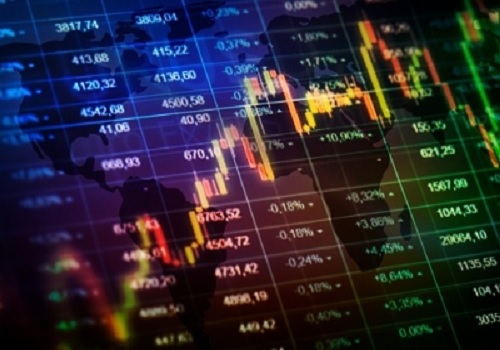Financials Sector Update : ICRA Webinar on NBFC-MFIs sector outlook By Motilal Oswal Financial Services Ltd

FY25 AUM growth to decline to 0-5%; Credit cost to peak at 5.4%-5.6% The MFI and unsecured lending space are currently navigating a difficult landscape, characterized by a significant rise in bad loans. This trend has raised alarms about overleveraging and prompted warnings from regulators. RBI has implemented measures such as raising risk weights, while the MFIN has introduced tighter controls to rein in loan growth. ICRA hosted a webinar to discuss MFI industry trends, asset quality, and profitability outlook. The webinar was presented by Mr. Karthik Srinivasan, Senior Vice President & Group Head, Mr. A M Karthik, Senior Vice President & Co-Group Head, and Mr. Prateek Mittal, Assistance Vice President & Sector head. Following are the key insights from the session –
Asset quality deterioration led by overleveraging, socio-political disruptions, and operational challenges
* MFI asset quality deterioration is led by several factors –
a. Borrowers Overleveraging: The growing trend of borrowers having multiple lending relationships has led to a sharp rise in overall indebtedness. With debt spread across various lenders, borrowers faced increased financial pressure, making it difficult to manage repayments and thus contributing to financial instability.
b. Climatic Impact: Severe heatwaves, floods, and cyclones have significantly undermined asset quality.
c. Socio-Political Disruptions: Farmers' protests and loan waiver movements have led to write-offs, impacting asset quality.
d. Operational Strain: Challenges such as low center attendance, high field-level attrition, and rising door-to-door collections are affecting operations.
e. High inflation has further aggravated the stress: Post-COVID, many businesses and jobs were severely impacted, leading to increased borrowing and strong credit growth during a period of high liquidity. However, wage and business growth have not kept pace with inflation, which has been especially challenging for the rural households. As a result, there has been a de-prioritization of unsecured lending leading to rising delinquencies.
Near term stress to continue; condition expected to stabilize post 1QFY26
* Delinquencies (90+ DPD) in the NBFC-MFI sector have increased from 1.7% in FY20 to 2.2% in FY24, and are expected to rise further.
* The borrower rejection rate is expected to rise in the near term due to increasing financial strain on borrowers. Additionally, 20% of borrowers have more than three lenders, while 80% have one or two lenders. A significant unwinding of leverage, totaling INR400b, has already occurred.
* Asset quality is likely to further deteriorate in 2HFY25 due to customer overleveraging and other macroeconomic factors. This period is transitional and unavoidable, with near-term stress expected in the current financial year and upto 1QFY26. However, conditions are expected to stabilize thereafter.
ICRA expects muted AUM growth at 0-5% in FY25 for NBFC-MFIs
* AUM growth in the NBFC-MFI sector has slowed significantly, dropping from 50% in FY18 to 29% in FY24, and is expected to decline sharply to 0-5% by end of FY25 given the rising concerns about asset quality.
* However, a recovery in AUM growth is anticipated from 2QFY26, with an estimated growth of 10-15% in FY26 driven by disbursement of high quality loans in MFI segment.
Credit cost to peak at 5.4%-5.6% in FY25; est. FY26 credit cost at 3.7-3.9%
* Credit costs have increased in 1HFY25 owing to stress in MFI industry. ICRA estimates credit cost to peak at ~5.4-5.6% by FY25 led by borrower overleveraging and operational challenges.
* Credit costs are expected to gradually decline in FY26 as lenders tighten their underwriting criterias alongside improved credit bureau checks. These checks now include validation of voter IDs with the help of multiple vendors, and efforts are also made to enhance the quality of other parameters, such as entering the last four digits of Aadhar, which will help streamline borrower identification.
* Additionally, addressing the overlap of loans across various sectors apart from MFI, such as gold loans, home loans, and agricultural KCC loans, will also ensure better underwriting and enable lower delinquencies, contributing to a reduction in credit costs. ICRA thus estimate credit cost to decline to 3.7-3.9% by the end of FY26.
Profitability trends to remain muted in near term; expect recovery in FY26
NIMs have remained under pressure in 1HFY25, largely due to decline in AUM growth in MFI sector and ongoing rise in funding costs. This compression in margins and rising credit costs may affect profitability in near future. ICRA expects RoA in the range of 0.4-0.8% in FY25 and this is likely to improve to 1.3-1.7% in FY26, with bulk of recovery anticipated during 2HFY26. Also, an additional funding of INR180-200b is required to support growth, apart from refinancing of existing/maturing lines.
Developments in the Banking Sector: Unsecured loan growth to moderate
* After a peak of 90.2% YoY growth in FY21, MFI lending growth has slowed to 13.1% in 2QFY25, with further moderation expected in the seasonally strong 2HFY25.
* Although the overall loan book continues to grow, the quality of new disbursements isn’t very encouraging. Borrowers in some rural and semi-urban areas are experiencing income volatility, which is negatively affecting their repayment behavior.
* Growth for lenders has sharply declined from the high levels seen in FY24, with unsecured loan growth weakening further in 2QFY25, signaling a notable slowdown.
* The proportion of unsecured loans in the total loan book has decreased after years of growth. For banks, stress in the MFI segment and ongoing challenges in the credit card sector have contributed to slower growth. After peaking at 9.2% of total loans, the share has slightly moderated in 1HFY25, and is expected to decline further as unsecured loan growth continues to moderate.
* MFI slippages have contributed disproportionately more to overall slippages of the lenders highlighting the significant stress within the sector. For Bandhan, MFI slippages accounted for 68% of total slippages, despite the MFI loan mix being only 47%. The situation is even more severe for RBL and IIB, where the ratio of MFI slippages to total slippages is 2-3 times higher than their MFI loan mix. We remain cautious and expect slippages to increase further in 3QFY25.
Outlook for FY26: RoA to recover to 1.3-1.7%
ICRA expects credit costs to decline to 3.7-3.9% by the end of FY26 after peaking in FY25. The industry, which had been growing at 30%, is now expected to grow at a slower rate of 10-15%. Southern states with higher per capita income (e.g., Kerala, Tamil Nadu) are performing better, even amidst adverse conditions like floods while states like Odisha and Jharkhand face significant challenges. The economy's cash flow in Nov and Dec has shown improvement, with positive signs emerging from the Kharif season and a good harvest, leading to optimism about increased cash availability. This, combined with the positive impacts of festival activities, is expected to boost disbursements and collection performance. RoA is expected to be in the range of 0.4-0.8% in FY25 and in the range of 1.3-1.7% in FY26.
For More Motilal Oswal Securities Ltd Disclaimer http://www.motilaloswal.com/MOSLdisclaimer/disclaimer.html
SEBI Registration number is INH000000412










More News

IT Sector Update : BPO services: Pockets of caution and selective resilience by Kotak Instit...













